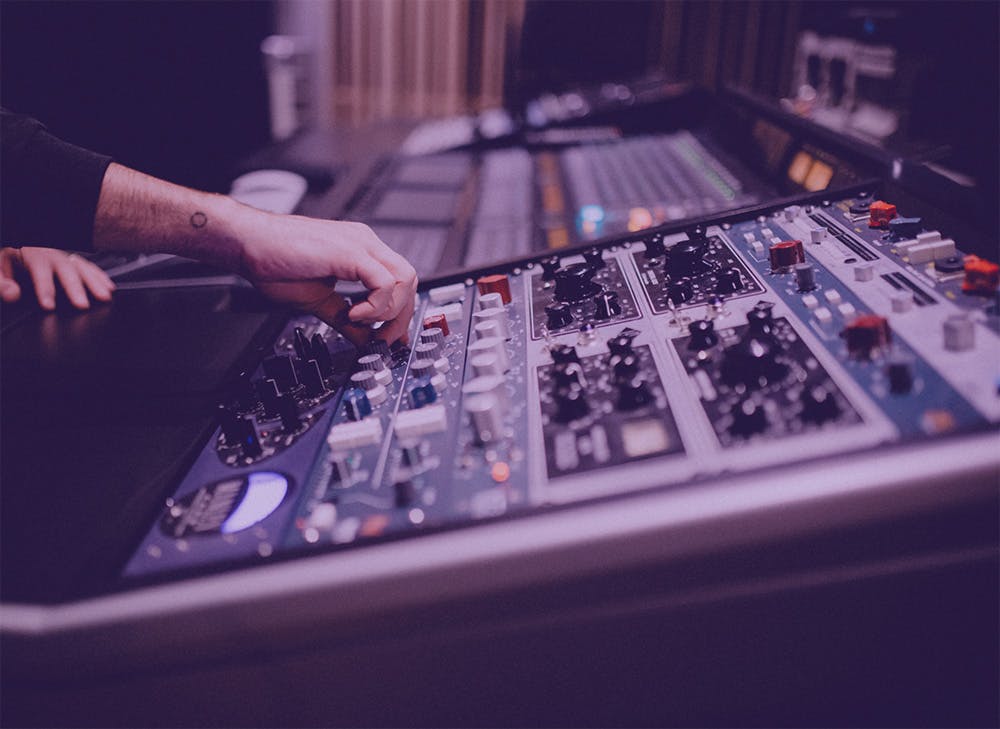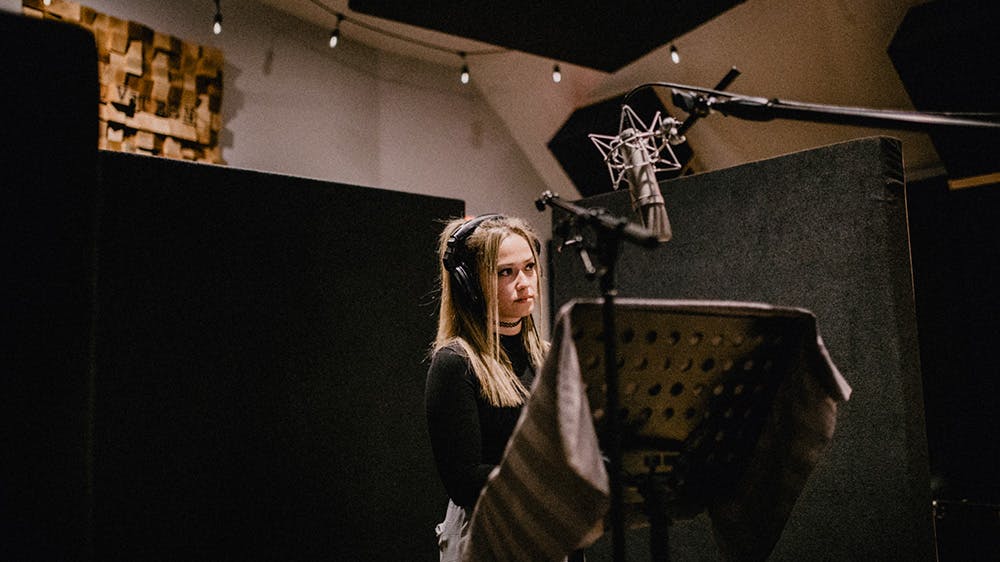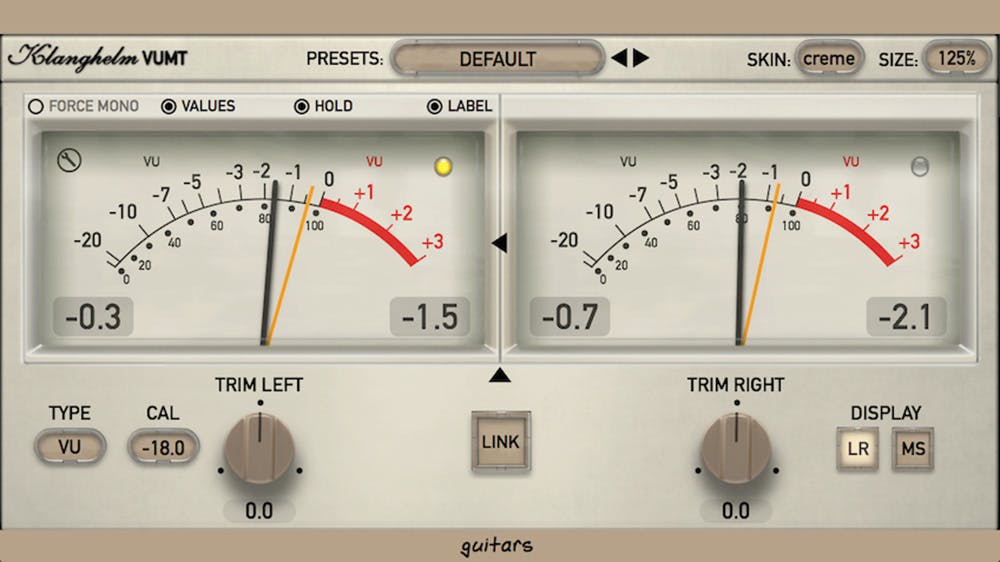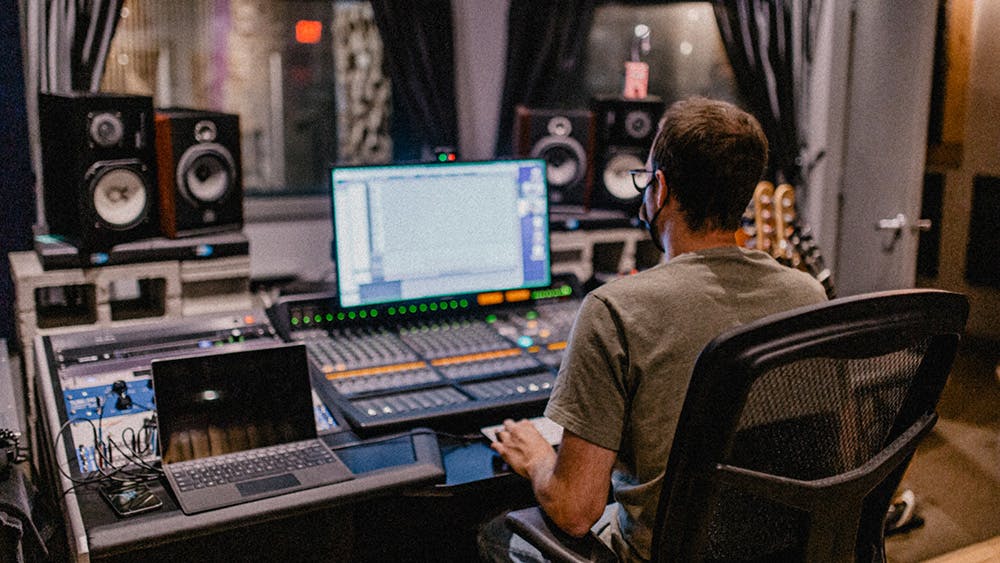Creating a Solid Vocal Chain with UAD
Reading time: 3-4 minutes
Getting a great vocal is the cornerstone of almost every song ever written. So we need to focus on really making sure that it sounds killer and cuts through the mix. My vocal chain is always evolving, but I thought I would describe the way it is currently working. And of course, every vocalist requires a slightly different setup, but this is a go-to for me that generally gets the job done.
MICROPHONE
I have three general go-to microphones at our studio: AKG C12VR, Neumann U87, and the Shure SM7B. The choice here depends on the singer, the type of music, and the sound the band is going for.
AKG C12VR - This microphone is super warm sounding, full of body and depth. I love this microphone on a softer vocal or a really organic sound. This can also help tame a singer who has a really bright and sharp tone.
Neumann U87 - This is a bit of an industry standard. Super bright, cuts through a mix no problem, and feels great. I use this microphone probably 75% of the time.
Shure SM7B - I used to use the sm7 a lot more, but it's taken a back seat for me. This mic is awesome for a vocalist with a really aggressive style, such as anything hard rock to metal. It helps tame some of the harsh frequencies and level it off.
ON THE WAY IN
At our studio, we don't have a whole ton of outboard gear. So we rely on in-the-box methods for treatment. So depending again on the type of vocalist and sound, I'll usually hit either of these two preamps:
BAE 1073MP - This guy is super smooth, feels a bit slower and warmer.
API A2D - Kind of the opposite, has a sharper sound. However, it does something really interesting to the top end, almost like a tape saturation. I love the U87 and API combo for this reason.
Once in the box, I usually want to get some compression done. So I'll hit the vocal with a Blue Stripe UAD 1176 Plugin before it hits Pro Tools. Honestly, I'm not to afraid to hit it pretty hard, again depending on the singer. Sometimes I'll knock off 6-8 dB at the max. I may have an EQ just before the compressor on the way in if needed, maybe an SSL with a HPF engaged.
VOCAL CHAIN IN THE MIX
Once I'm in the mixing stages, I have a general approach that I apply and tweak. I generally am using a UAD vocal chain approach, with some other plugins sprinkled in the mix.
Again, it always changes, but this is a current starting point for me (in order).
Fabfilter Pro-Q 3 - This is for doctoring any weird frequencies that are popping in and out of the mix. Fabfilter EQ's are great for zeroing in on problem areas. I'll also probably filter the top and bottom with an HPF and LPF, to taste.
UAD SSL E Series Channel Strip - I use this for further shaping to taste. I like the way the SSL feels, so although I could technically accomplish the same EQ settings with the Fabfilter, using the SSL puts me in a different headspace and I find it easier to get what I want. Often I'll cut some muddier lower mids and maybe add some top.
UAD Pultec EQP-1A - I don't always put this one in the chain, but lately I love added some nice sparkly top end with it. Pretty much drop it in and turn up the top end. I'll sometimes go to 10k vs. 8k. We can get pretty crazy with this, as you'll see in the next step
2 x Fabfilter Pro-DS - Yes that is two de-esser plugins. This is a trick I learned from another engineer at the studio, Brad Smith. One de-esser is set to watch 5k, and the other set to around 10k. That way the two de-essers are sharing the load, and we're not getting weird artifacts in the vocal. Also, this allows us to brighten the vocal quite a bit in the previous step with the Pultec, and then tame the harsh peaks.
UAD 1176 Rev A (Blue Stripe) - Yeah.... I love this plugin... I use it again to level the vocal off. I always set this guy to slow attack and quick release, I find you can hit it hard without any real artifacts. Sits the vocal down in the mix perfectly.
OPTIONAL: UAD Fatso JR. - This will I'll leave up to you. It's not necessary, but in some applications it works great. I'll include this plugin if I'm still getting some nasty highs. The tape saturation setting called Warmth really helps give the vocal a bit of drive, tame the high ends, and sits in the mix. Use to taste!
Other than that, my vocal bus hits a parallel compressor, and there are reverbs and delays that I use as well. However, those are part of different chains, so maybe a further post. Let me know if you have any questions or any thoughts to add to that!
Cheers!






